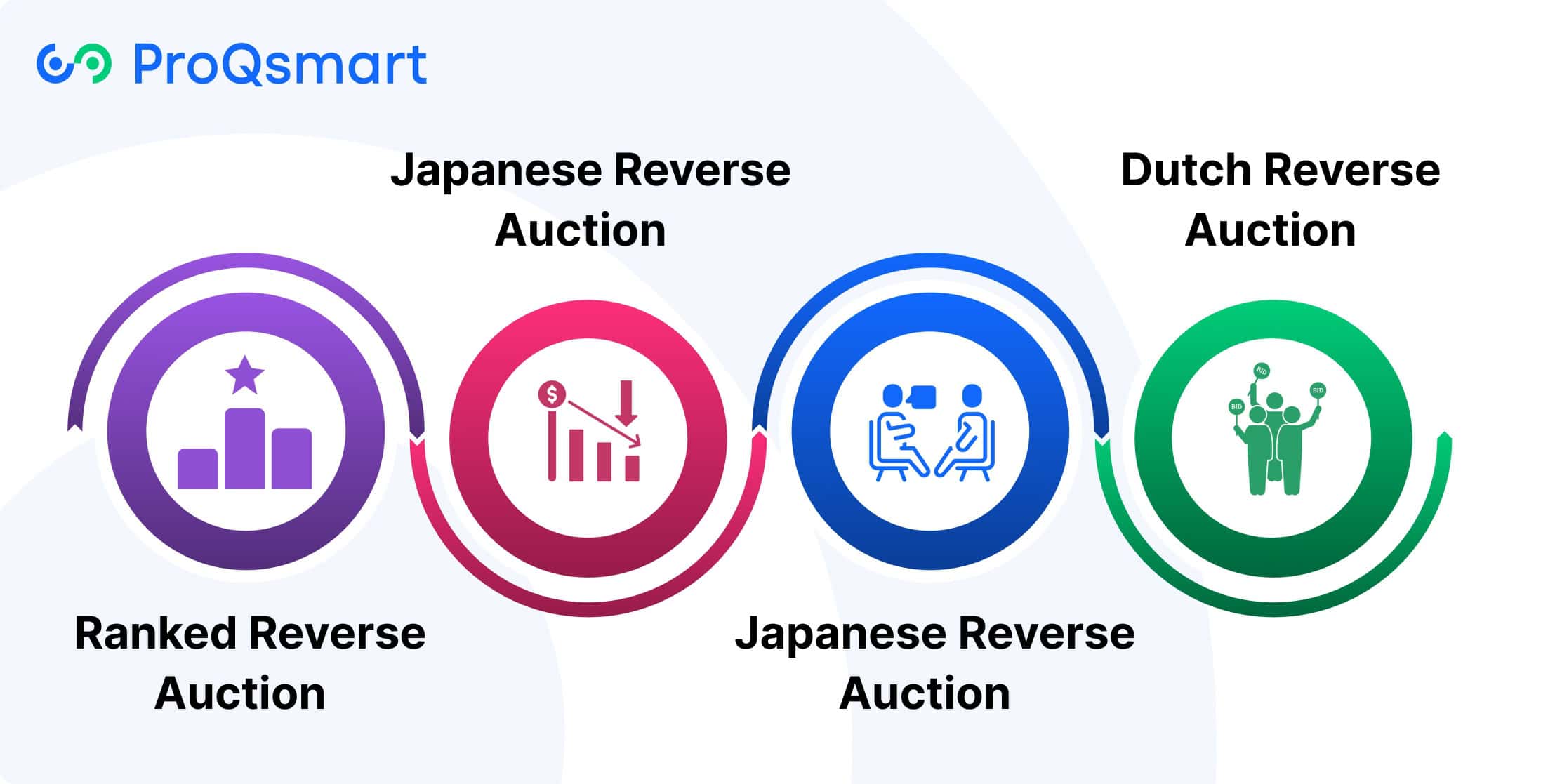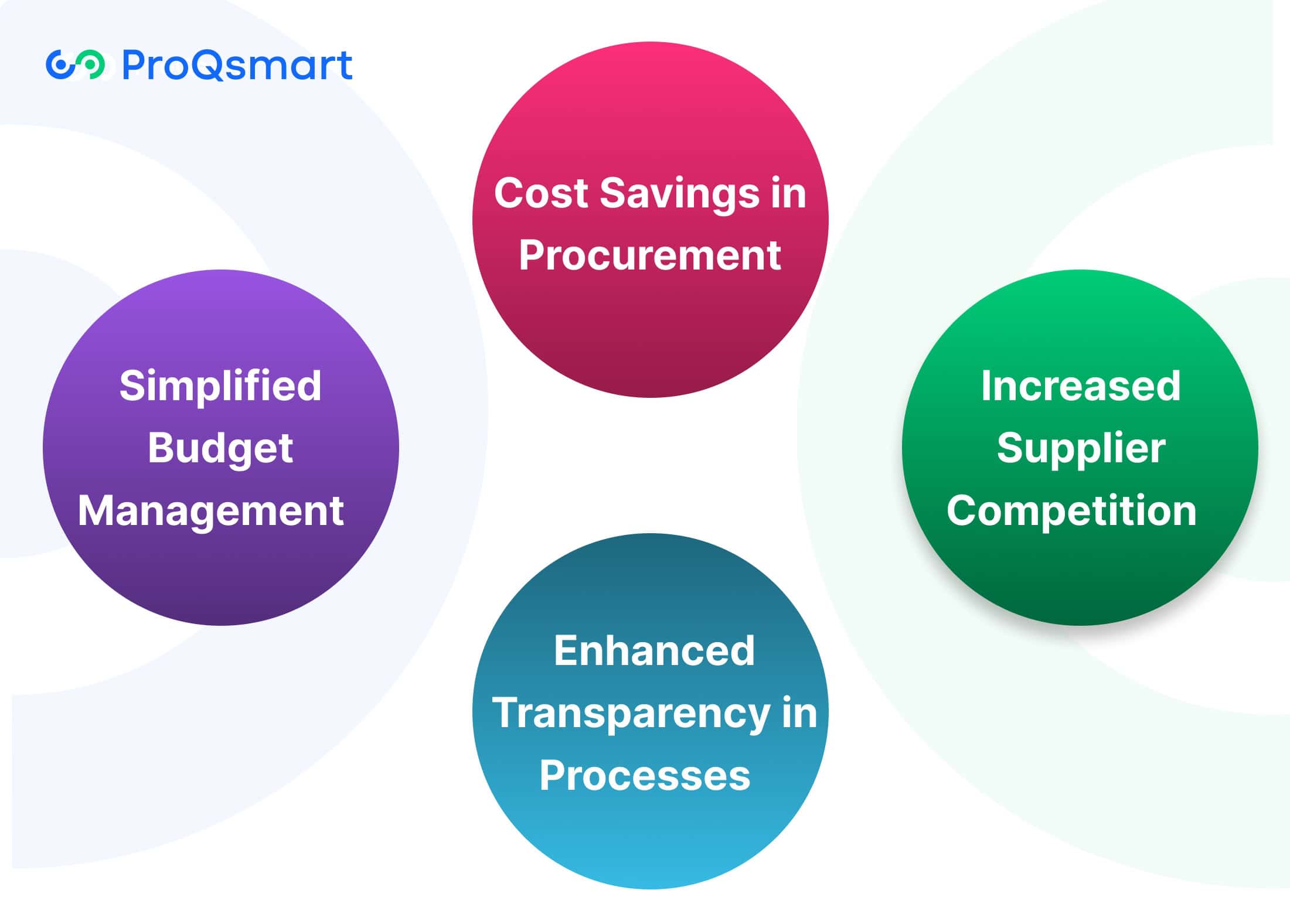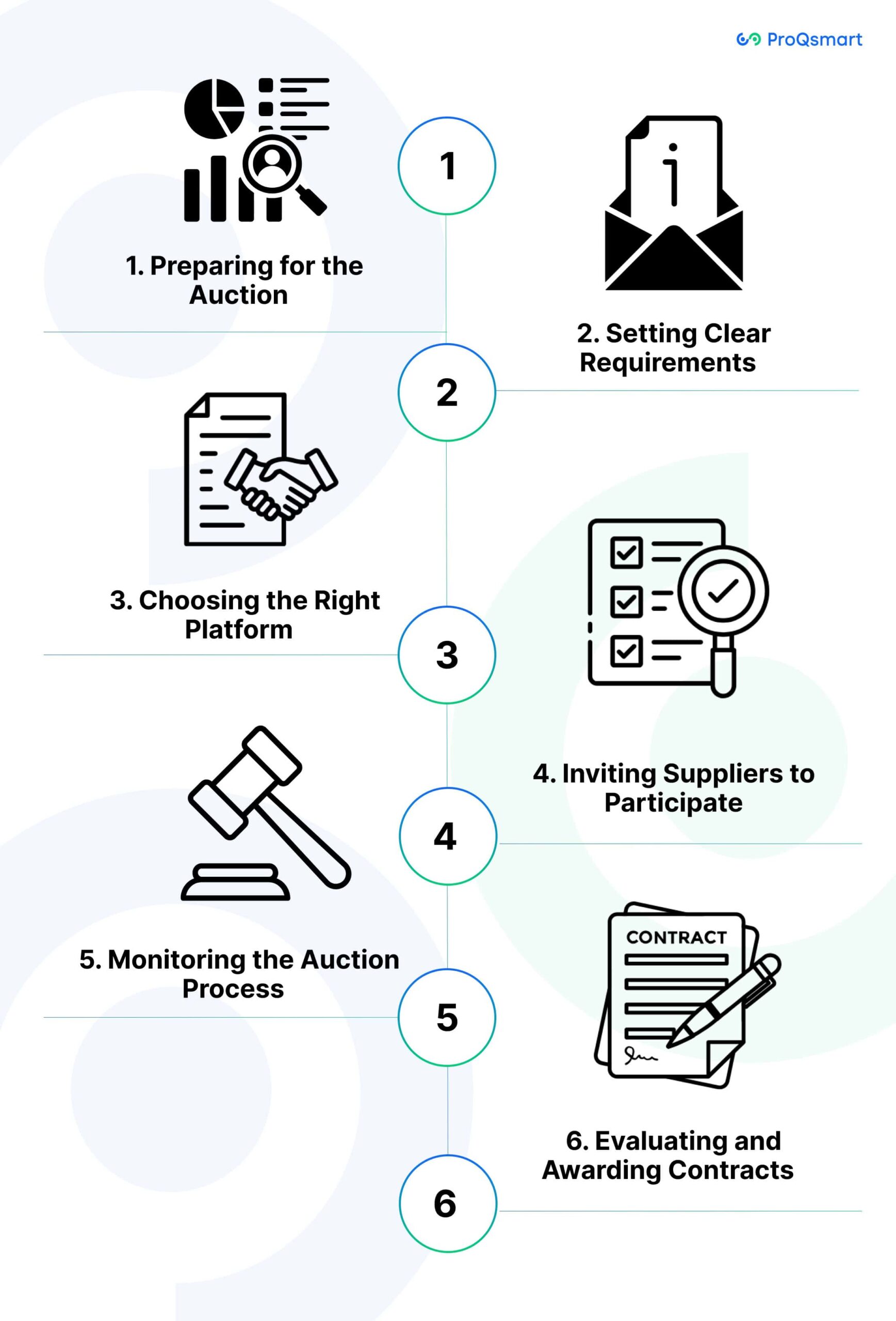Reverse auctions have emerged as a powerful procurement strategy that enables organizations to invite suppliers to compete by bidding lower prices for contracts. This innovative approach not only fosters competition among suppliers but also enhances transparency in pricing, allowing project owners to secure the best possible deals.
Unlike traditional procurement methods, where suppliers submit fixed bids, reverse auctions empower buyers by creating a dynamic environment where suppliers actively compete to win contracts. This competitive bidding process is particularly beneficial in the interior design and fit-out sector, where material costs can significantly impact project budgets.
By leveraging technology and online auction platforms, businesses can streamline their procurement processes, access a wider pool of qualified suppliers, and evaluate supplier capabilities more efficiently. As organizations seek to balance quality with cost-effectiveness, reverse auctions present a strategic tool that can lead to substantial savings and improved project outcomes.
This article will explore how reverse auctions can be effectively implemented in interior fit-out projects to maximize value and efficiency, while also addressing best practices and potential challenges associated with this procurement method.
What Is a Reverse Auction?
A reverse auction is a strategic procurement approach in which sellers compete against each other to provide the best price for a given contract. In reverse auctions, buyers flip the script and take control of the process. Unlike a standard auction where bidders just outbid each other, they can focus on the best combination of price, quality, and other key measures.
This approach is widely recognized for stimulating significant cost savings. It increases transparency and competition in today’s procurement process, making it a powerful, versatile sourcing tool with a wide range of applications across industries.
How Reverse Auctions Work
Buyers initiate the reverse auction process by specifying their needs in detail through a request for proposal (RFP) or a request for quote (RFQ). This ensures that all sellers understand the specifications, expected price range, and delivery deadlines clearly. By doing so, buyers enhance the effectiveness of their procurement auctions, ensuring competitive pricing and quality offers.
Sellers then engage in reverse bidding, placing their bids competitively while providing crucial information about the products, pricing, and their capability to meet the buyer’s requirements. In high-volume applications, such as automatic sand-casting, suppliers must demonstrate their capacity to manage complex capital equipment, which is essential for success in the reverse bidding system.
Technology serves as the backbone of this entire process. Reverse auction software enables a real-time marketplace where buyers and sellers can interact transparently and efficiently. Clear guidelines from buyers help maintain fairness and establish trust, fostering long-term supplier relationships without compromising supply chain integrity.
Types of Reverse Auctions

Reverse auctions are an essential element of today’s procurement strategies, particularly in the context of reverse auction procurement, with many formats available to suit varying requirements. Each one is defined by its bidding approach, benefits, and best fit for various procurement objectives, making the reverse auction process a vital tool for maximizing value.
|
Auction Type |
Features |
|---|---|
|
Ranked Reverse Auction |
Bidders see rank but not leading bid price. |
|
Japanese Reverse Auction |
Single price decreases at fixed intervals; first to accept wins. |
|
Dutch Reverse Auction |
Buyers specify details; suppliers bid on partial or full quantity. |
|
Open/English Reverse Auction |
Suppliers see leading bids; prices decrease openly over time. |
Ranked Reverse Auction
The ranked reverse auction gives bidders some intelligence by allowing them to see their rank position relative to competitors without disclosing the best bid price. This inversion really makes this format key. Here, non-price factors such as quality and lead time are key. By looking further than the bottom line, this method encourages strong competition without compromising supplier trust and participation.
Lower-ranked suppliers might be left out in the cold, which can affect their incentive to compete vigorously.
Japanese Reverse Auction
In Japanese reverse auctions, the auction starts with an opening bid set by the buyer. Suppliers need to commit up front, then prices drop steadily in set intervals. Similar to a traditional auction, the first supplier to accept the lowered price wins the contract. This approach is particularly effective for price-driven procurement, because it encourages suppliers to deliver a speedy response.
This format makes it much easier and more efficient for decision-makers to compare. It might mistakenly cut down interest from suppliers who want stronger bidding establishment terms.
Dutch Reverse Auction
Compared to both English and uniform auctions, the Dutch reverse auction gives suppliers more flexibility. They may bid on partial or complete quantities at a price set by the purchasing entity. This approach is particularly effective for big, high-volume procurement needs.
By distributing orders across various suppliers, you can reduce spending and improve supply continuity. Buyers gain too—by establishing price thresholds at the start, they save time by guaranteeing alignment with available budget.
This strategy often leads to fragmented sourcing that must be carefully coordinated to keep supply chains intact.
Open or English Reverse Auction
An open or English reverse auction is extremely transparent. In a typical reverse auction, suppliers are able to view the current best bids and update their bids accordingly, in real-time. This type of auction is commonly used for purchasing commodities or other fungible goods in which price is the determining factor.
This dynamic competition creates downward pressure on price, which is advantageous to purchasers. Finding the right balance between quality and cost efficiency is imperative. We can’t allow quality to become an afterthought in our quest to cut spending.
ProQsmart, the world’s most advanced procurement platform, specializes in supporting all these auction types and more. ProQsmart makes reverse auctions easier with e-tenders, supplier performance tracking, and procurement that’s guided by your budget.
This groundbreaking platform promotes greater transparency, collaboration, and cost savings.
Benefits of Reverse Auctions

Reverse auctions have become a valuable tool in procurement, offering a structured and efficient approach to sourcing goods and services. By harnessing technology and competition, reverse auctions offer many powerful benefits that strengthen procurement strategies.
Here, we dive into their benefits more thoroughly.
- Significant cost savings for organizations
- Improved efficiency in procurement processes
- Access to a wider range of suppliers
- Enhanced transparency and trust in bidding processes
- Simplified budget management and cost tracking
Cost Savings in Procurement
Reverse auctions are unique in their capacity to deliver such deep savings. The competitive bidding process guarantees that suppliers bid their best price, yielding savings of 18–20 percent after the auction.
As a case in point, the manufacturing sector and the construction industry have both found savings on procurement via reverse auctions. By creating measurable value and increasing spend efficiency, this strategy becomes essential to any organization focused on managing costs.
Increased Supplier Competition
The best outcomes occur when you encourage competition among suppliers. Reverse auctions encourage a competitive environment in which numerous vendors bid against each other, guaranteeing buyers the greatest value at the lowest price.
That competitive edge encourages innovation and drives suppliers to innovate on price, quality and performance.
Enhanced Transparency in Processes
Transparency lies at the heart of reverse auctions. Suppliers benefit from visibility into the entirety of the bidding landscape, which encourages fairness and builds trust among suppliers.
Buyers win too through transparent, auditable processes, which improve supplier relationships and help ensure compliance with procurement best practices.
Simplified Budget Management
Reverse auctions make it easier to plan budgets by making it easier to track costs and ensuring procurement departments fit within a given budget. Tools such as ProQsmart make this process even smoother through real-time tracking, AI-powered analytics, and integration directly into budgets.
These caveats guarantee that procurement projects stay cost-effective and budget-friendly.
Reverse Auctions in Interior Fit-Out Projects
Reverse auctions, as a flexible procurement tool, are perfectly suited to the fast-paced nature of interior fit-out projects. This reverse auction process requires laser-focus, budget discipline, and razor-thin schedules, with success contingent on all three. Additionally, reverse bidding fosters a competitive environment that encourages suppliers to provide lower bids, ultimately increasing efficiency, reducing expenses, and contributing to achieving project goals.
Relevance to Procurement in Fit-Outs
Interior fit-out projects have the unique challenge of requiring highly specialized and varied materials and services, from bespoke joinery to specialist flooring. Reverse auctions meet these procurement needs by encouraging robust competitive bidding, enabling government buyers to easily compare options side-by-side.
Take the example of a company wondering where they should get their lighting fixtures from. Strategically, reverse auctions help speed up the procurement timeline so that materials are ready when they are needed – on time and without cutting corners on quality.
Improving Supplier Engagement in Fit-Outs
Reverse auctions force suppliers to compete against one another, spurring innovation and driving down costs. Involving multiple suppliers guarantees a range of solutions, like green materials or cutting-edge designs, resulting in superior project outcomes.
Post auction, ProQsmart and other similar tools enhance supplier relationships by tracking performance and improving collaboration with suppliers. This builds trust and lays the groundwork for long-term partnerships.
Ensuring Quality in Fit-Out Projects
Though cost savings are paramount, quality must be preserved. Evaluating supplier capabilities beyond price, like fitness, reliability, and past performance, ensures high quality and precise standards in the final output of the project.
ProQsmart takes care of documentation and compliance, ensuring informed decision-making that maintains quality standards.
Steps to Conduct a Reverse Auction

Reverse auctions are a powerful tool to maximize taxpayer dollars and obtain goods and services at the best possible price through competition. When done well, they can achieve millions of dollars in cost savings, increase transparency, and expedite the decision-making process.
Here’s our step-by-step guide to the key steps to take to make sure your auction goes off without a hitch.
1. Preparing for the Auction
Thorough preparation sets the stage for an efficient and effective auction. Begin with comprehensive market research to identify supplier capabilities, pricing trends, and industry benchmarks.
Objectives and requirements, which should be made as clear as possible up-front, need to focus on the organization’s goals from the outset. Engaging stakeholders across procurement, finance, and operations is critical to ensuring that priorities are set in the right areas and mitigating any concerns upfront.
2. Setting Clear Requirements
Clear specifications are key for suppliers to be able to provide their best bids in a reverse auction procurement scenario. For instance, naming products or services would provide clarity in the auction process. The more detailed your requirements are, the clearer your expectations will be for suppliers, resulting in high-quality submissions that enhance the overall reverse bidding experience.
3. Choosing the Right Platform
Choosing the right platform is key to success. Solutions like ProQsmart, for instance, provide easy to use dashboards paired with powerful AI-driven analytics, enabling automation and compliance with ease.
Security and reliability can never be an afterthought, since they protect state and local procurement data.
4. Inviting Suppliers to Participate
Contact potential suppliers no less than one week before the auction. Include all necessary information, such as dates and regulations.
Engage with different types of suppliers to create competition and spur innovation.
5. Monitoring the Auction Process
In the reverse auction process, real-time monitoring keeps everything moving in the right direction. Addressing technical issues quickly and accessing real-time data enhances control over the dynamics of reverse bidding.
6. Evaluating and Awarding Contracts
Evaluate post-auction bids on price, quality and service to ensure best value. This kind of transparency in the evaluation process builds trust internally and externally and ensures fair decision-making.
Finding the right balance between cost and value will lead to success in the long run.
Challenges of Reverse Auctions
Increased competition leads to true bidding down of prices and can save businesses millions. They equally pose challenges that need to be tackled for effective implementation. These challenges usually result from a misfocus on price, a reluctance to try new approaches, and a misunderstanding about the process.
Identifying and overcoming these challenges is essential for making forward-looking, sustainable procurement progress.
Maintaining Supplier Relationships
Maintaining relationships with suppliers post-award can get tricky. Suppliers may feel undervalued if communication breaks down after a highly competitive bidding process. To address this, companies must focus on honest feedback.
Consistent touchpoints, whether quarterly retrospectives or co-creation workshops, can build that trust, proving mutually beneficial in courting long-term partnerships. Second, consistent follow up with suppliers helps build their value within the larger supply chain.
It addresses the high quality of feedback due and delivery time. Good relationships help improve day-to-day functioning, and more importantly, they help foster an environment where suppliers are invested in continuing innovation and service quality.
Ensuring Quality Standards
One of the biggest challenges with these auctions is ensuring quality is upheld when the process moves towards an emphasis on lowering costs. To counter this, agencies and organizations can require quality standards as part of the bidding process.
For instance, asking suppliers to have relevant certifications or deliver product samples for testing keeps quality high. Performance metrics, like on-time delivery rates or defect ratios, can be written into the results contracts to set clear expectations.
This approach harmonizes cost-effectiveness with quality assurance.
Overcoming Resistance to Change
Implementing reverse auctions frequently faces pushback from internal stakeholders who are new to the process. Education is a big part of getting past this obstacle. Conducting workshops to explain the auction mechanism, like Japanese reverse auctions, goes a long way towards demystifying the mechanics and benefits.
Addressing Misconceptions About Auctions
While common misconceptions, like thinking reverse auctions are all about price, keep reverse auctions from realizing their full potential. Clear, transparent communication throughout the process on how various parameters, such as service levels and delivery methods, will be scored is imperative.
The Institute for Supply Management reports that today’s reverse auctions do take these factors into account, allowing them to be used for a wide variety of purchases. Bringing in experts as a guiding force during the setup stage helps answer lingering questions and ensures that the auction process is in harmony with bigger procurement missions.
Best Practices for Successful Reverse Auctions
When implemented correctly, the reverse auction procurement process serves as one of the most impactful tools in the procurement toolbox, offering organizations a competitive framework for delivering cost savings and driving efficiency. Their success hinges on thoughtful design and well-informed implementation. By adopting effective auction strategies, businesses can achieve longer-term value beyond mere savings.
Define Clear Objectives and Criteria
Setting clear goals is the first step toward a successful reverse auction. To be effective, organizations need to first define clear goals, such as realizing cost savings, building better relationships with suppliers, or streamlining the procurement process.
Having clear evaluation criteria for all bids—including pricing, delivery and/or completion time frames, and quality standards—helps establish an unbiased, level playing field for all bidders. Objectives should be your reverse auction’s guiding framework, helping to ensure that the auction remains focused and in line with larger business objectives.
Use Reliable E-Sourcing Tools
Tapping into sophisticated e-sourcing tools makes the auction process easier and more accurate. Platforms like ProQsmart, building AI-driven insights, simplify and enhance operations across bid management, supplier communication, and compliance tracking.
The most reliable tools improve transparency and offer real-time data, allowing companies to act on the best available information to make smart decisions. Choosing the right software provider is essential for integrating reverse auctions easily into the process and reaping the long-term benefits.
Communicate Transparently with Suppliers
Clear and transparent communication fosters trust and keeps suppliers engaged and motivated to participate in the auction. Sharing specifics about the auction, your expectations, and the timeline—like providing at least a week for suppliers to prepare—ensures they have the information they need to provide competitive bids.
Providing post-auction feedback not only helps you improve continuously but builds better relationships up and down the supply chain to ensure everyone’s success.
Conduct Thorough Market Research
Responsible market research is key to making the right decisions. By understanding supplier capacity, pricing ranges, and market conditions, companies can develop achievable benchmarks and find the right partner.
In such instances, research not only assists in optimizing cost savings with quality, it promotes sustainable procurement practices.
- Provide explicit goals and criteria for evaluation.
- Prevent collusion.
- Use well-known e-sourcing platforms.
- Give suppliers enough time to prepare.
- Provide meaningful feedback to strengthen future supplier participation.
- Make informed decisions by conducting thorough market research.
Conclusion
Reverse auctions add new risk to procurement. They reduce cost, reduce time to source, and foster competitive pressure on suppliers. When approached with a strategic mindset, they demystify complicated purchasing decisions and ensure you get the greatest value for your dollar. Their impact on projects such as interior fit-outs illustrates their flexibility to meet specialized needs, ultimately saving time and money.
Success with reverse auctions largely hinges on the quality of the preparation. Clear goals, strong communication, and careful supplier management can turn the tide. By addressing challenges early and directly, we can make the process run smoothly and ultimately create a better outcome.
If you’re ready to elevate your procurement strategy and explore the benefits of reverse auctions, look no further. Discover how ProQsmart can enhance your reverse auction processes with its cutting-edge Reverse auction solutions. Book a demo today to see how our platform can streamline your procurement efforts, improve supplier engagement, and maximize value for your projects.



